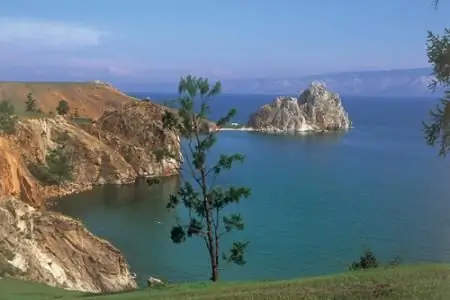- Author Harold Hamphrey [email protected].
- Public 2023-12-17 10:06.
- Last modified 2025-01-24 11:10.
The town of Eger (Hungary) is a settlement that is considered one of the most interesting and beautiful in the state. It is famous for its heroic and rich historical events. A huge number of medieval monuments and architectural ensembles built in the Baroque, Neoclassical, Rococo and Gothic styles are concentrated here. For one period, Eger was the seat of bishops, and today it is considered an archiepiscopal center. The population of Hungary perceives this city as a symbol of the country's patriotism.

Brief information about geography and history
Eger, Hungary can be proud of, is located in the North-Eastern region of the state, near the southern mountain slopes of Matra and Bükk. A settlement was built at a distance of 130 km from the capital of the state, on the banks of the small river Eger. The city is home to 60 thousand people. The life of the settlement is based on the legend of how Istvan Dobo, the constable of the Eger fortress, in 1552 for almost a whole month with a small detachment resistedthe Turks, who outnumbered them by 20 times. Many monuments, books, customs and museums are dedicated to this feat.
At the beginning of the 10th century, the Hungarian conquerors occupied the territory where Eger (Hungary) is today. This fact is confirmed by the graves found by archaeologists within the settlement. Armed men were buried in the graves, and Arabian coins were also found there. The time of the birth of the city coincided with the period of the reign of King St. Stephen. In 1241, the Mongol-Tatars invaded Eger. They almost completely destroyed the village. But when the Mongol-Tatar army left the city, a period of its development began. At this time, the same Eger fortress, which we mentioned above, was built. During the years 1458-1490, the Bishop's Palace was erected. It happened during the reign of King Matthias.

Nature, weather and climate
Eger, Hungary in particular, is characterized by a temperate continental climate. It is quite warm here in winter. The average daily temperature reaches three degrees below zero. But in summer it is very hot. Daytime temperatures can reach 35 degrees above zero. Autumn and spring are characterized by moderate heat and low precipitation. Most of the tourists come here during May-September. Tourists love Eger because it has amazing thermal springs and unsurpassed beauty of nature. The landscapes of the village and its surroundings simply fascinate the human eye.

Eger attractions
Eger (Hungary), whose sights are of interest to many historians and travelers, attracts the attention of the fortress around which the city was built. At the time when Istvan Dobo held the defense of the structure, it was badly damaged as a result of bilateral hostilities. Then, during the years 1553-1596, the fortress was reconstructed, using the drawings that were developed by architects from Italy. Today, the landmark has its original Episcopal Gothic style exclusively on a model presented at the Istvan Dobo Fortress Museum.
The Cathedral, built in the style of neoclassicism, is also worthy of the attention of travelers. This temple is the second largest in the country. The cathedral has the largest organ in Hungary. In the summer, church organ and classical music concerts are held here every day. Tourists will also be interested in the building of the Lyceum in the late Baroque style. It was erected by Count Karolaj Eseterhazai. Today it is a functioning college that trains future teachers. The building is decorated with exquisite artistic carvings and breathtaking frescoes. And on the second floor of the institution there is one of the most beautiful Hungarian libraries. It contains almost 130 thousand different volumes of literature.

Thermal springs and treatment
Many travelers are attracted by the city of Eger. Hungary has at its disposal several healing springs. Some of them are located in this city. Eger is one of the largestresorts in the country. Waters from thermal springs were used to treat various ailments in the Middle Ages. The first bathing houses on the territory of the settlement appeared already in the 15th-16th centuries. Here they took water procedures in wooden barrels and steam baths. The bathing culture was actively developed by the Turks who came to the Hungarian lands. They, in general, highly appreciated the indescribable power of healing water. To this day, many Turkish bathing houses have been preserved in the city. These are steam baths and baths with hot water. In Eger, at the beginning of the 17th century, a Turkish bath was erected, which still exists today. There is a modern balneology center here.

Winemaking
The village of Eger (Hungary), the photo of which is attached to the material, has been one of the most popular wine-growing regions of the state for many centuries. The famous wine "Bikaver" appeared in this place. Almost every Hungarian family in Eger has a wine cellar in their house. And in the dungeons passing under the city, many kilometers of cellars are equipped, in which the most famous Eger wines ripen.






